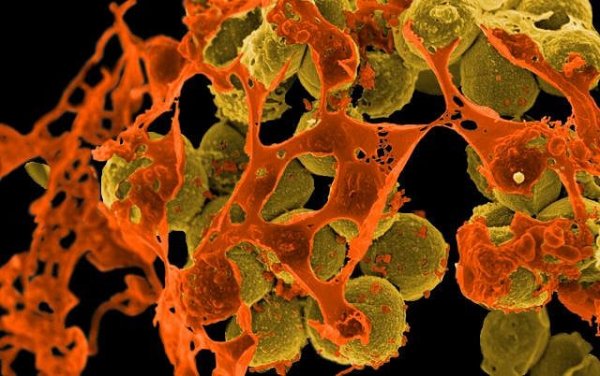
Space Bug
In a rather unromantic gesture, on February 14, SpaceX will be launching an antibiotic-resistant “superbug” into space. The bug will be living in microgravity aboard the International Space Station (ISS). The bacterium that will be shot into space will be the, often feared, MRSA (Methicillin-resistant Staphylococcus aureus).
Even so much as the mention or MRSA send shivers down the spines of many. MRSA is an antibiotic-resistant staph infection that can represent itself in the human body in the skin as painful, swollen, red bumps; but the infection can also travel further into the body, wreaking havoc on bones, joints, even the blood. This potentially life-threatening infection kills more Americans than HIV/AIDS, Parkinson’s disease, emphysema, and violence combined…every year.
So, why would scientists launch this dangerous bacterium into space and bring it aboard the ISS? Well, not for any nefarious or dastardly reason. The purpose of this project is to accelerate the mutations of the bacterium, allowing the scientists to watch the progression of the bug quicker than it’s progression on Earth, getting information ahead of those of us back home.

Our Medical Future
According to lead researcher Anita Goel, CEO of biotech company Nanobiosym, “We will leverage the microgravity environment on the ISS to accelerate the Precision Medicine revolution here on Earth.” In other words, using information from this study of the sped up life cycle of a MRSA bacterium, these scientists will be able to understand how bacteria change and mutate at a much faster rate than we would on Earth.
This information could be extrapolated to bacteria besides MRSA, and allow scientists to better understand how MRSA (and, in the future, other infections) travel through the body and mutate throughout their lives. This objective could lead to a medical future where even the most formidable antibiotic-resistant bacteria are no longer a fatal threat.